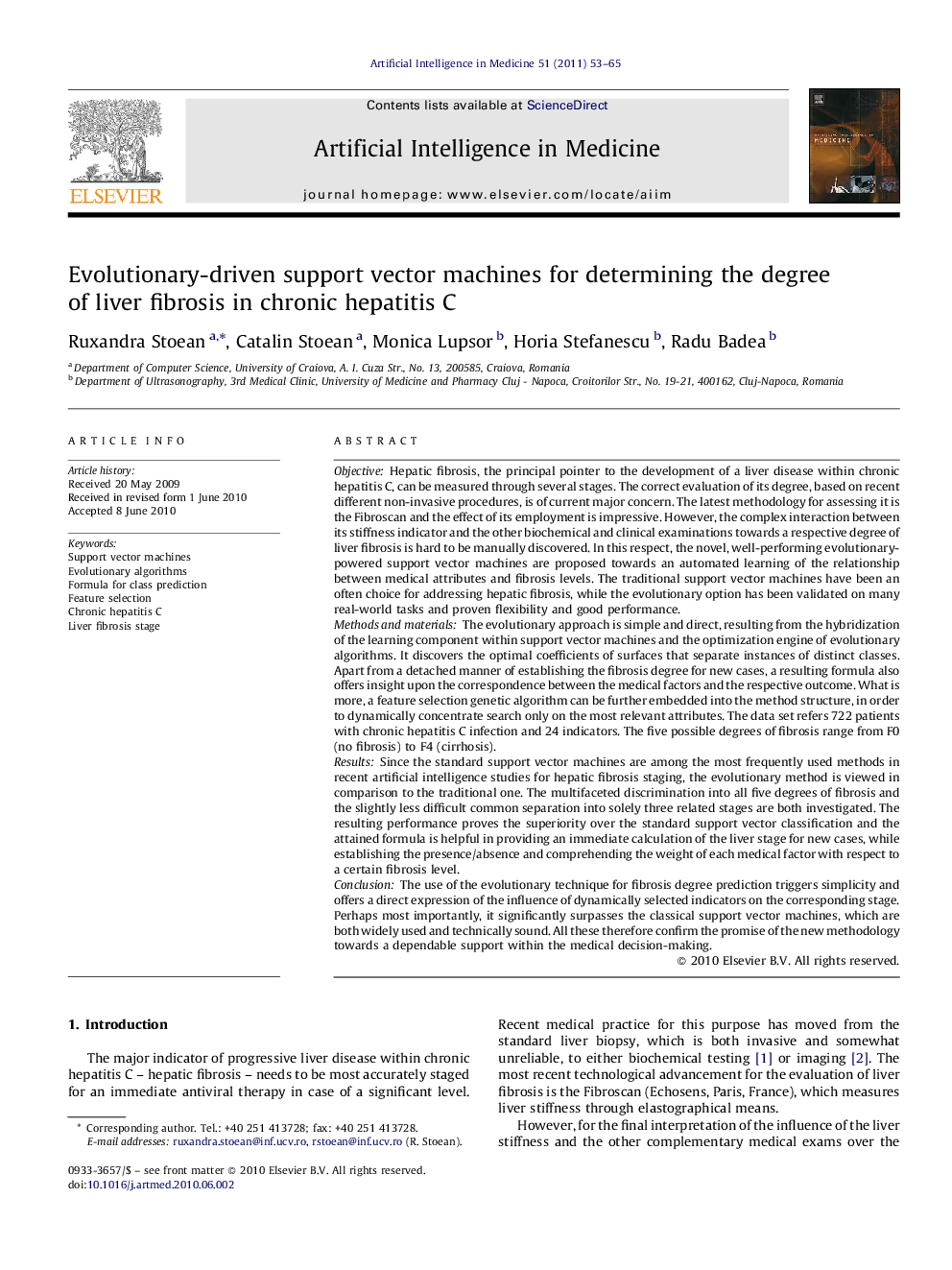| کد مقاله | کد نشریه | سال انتشار | مقاله انگلیسی | نسخه تمام متن |
|---|---|---|---|---|
| 378031 | 658867 | 2011 | 13 صفحه PDF | دانلود رایگان |

ObjectiveHepatic fibrosis, the principal pointer to the development of a liver disease within chronic hepatitis C, can be measured through several stages. The correct evaluation of its degree, based on recent different non-invasive procedures, is of current major concern. The latest methodology for assessing it is the Fibroscan and the effect of its employment is impressive. However, the complex interaction between its stiffness indicator and the other biochemical and clinical examinations towards a respective degree of liver fibrosis is hard to be manually discovered. In this respect, the novel, well-performing evolutionary-powered support vector machines are proposed towards an automated learning of the relationship between medical attributes and fibrosis levels. The traditional support vector machines have been an often choice for addressing hepatic fibrosis, while the evolutionary option has been validated on many real-world tasks and proven flexibility and good performance.Methods and materialsThe evolutionary approach is simple and direct, resulting from the hybridization of the learning component within support vector machines and the optimization engine of evolutionary algorithms. It discovers the optimal coefficients of surfaces that separate instances of distinct classes. Apart from a detached manner of establishing the fibrosis degree for new cases, a resulting formula also offers insight upon the correspondence between the medical factors and the respective outcome. What is more, a feature selection genetic algorithm can be further embedded into the method structure, in order to dynamically concentrate search only on the most relevant attributes. The data set refers 722 patients with chronic hepatitis C infection and 24 indicators. The five possible degrees of fibrosis range from F0 (no fibrosis) to F4 (cirrhosis).ResultsSince the standard support vector machines are among the most frequently used methods in recent artificial intelligence studies for hepatic fibrosis staging, the evolutionary method is viewed in comparison to the traditional one. The multifaceted discrimination into all five degrees of fibrosis and the slightly less difficult common separation into solely three related stages are both investigated. The resulting performance proves the superiority over the standard support vector classification and the attained formula is helpful in providing an immediate calculation of the liver stage for new cases, while establishing the presence/absence and comprehending the weight of each medical factor with respect to a certain fibrosis level.ConclusionThe use of the evolutionary technique for fibrosis degree prediction triggers simplicity and offers a direct expression of the influence of dynamically selected indicators on the corresponding stage. Perhaps most importantly, it significantly surpasses the classical support vector machines, which are both widely used and technically sound. All these therefore confirm the promise of the new methodology towards a dependable support within the medical decision-making.
Journal: Artificial Intelligence in Medicine - Volume 51, Issue 1, January 2011, Pages 53–65